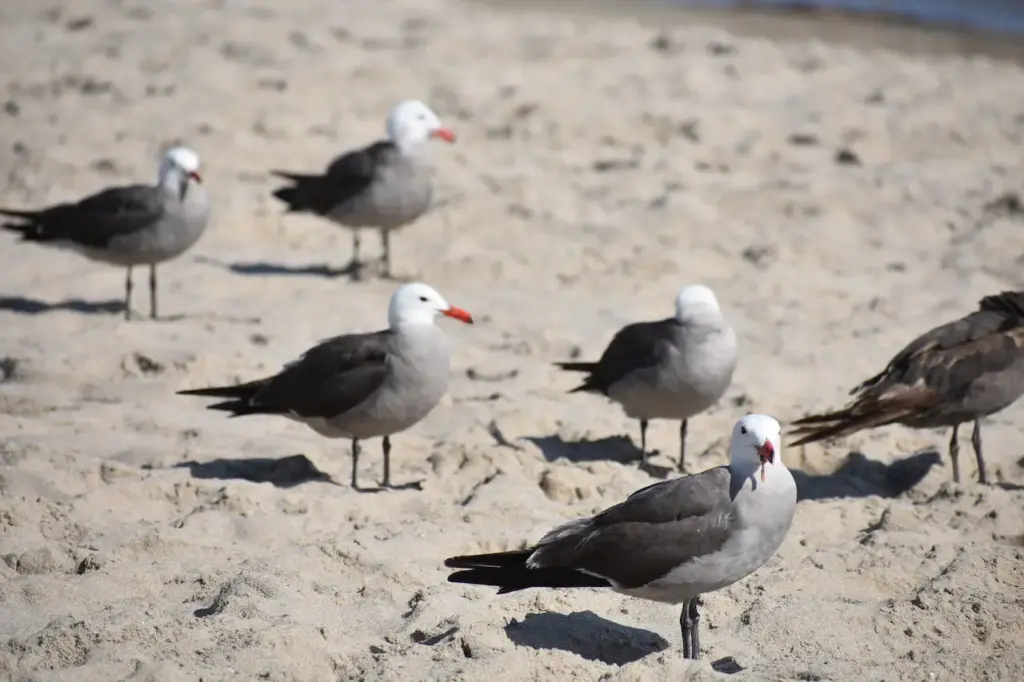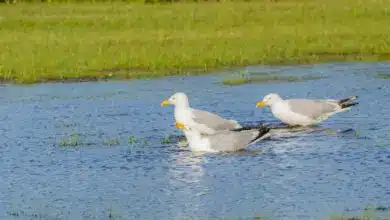The California Gulls, Larus californicus – or Common American Gull – is a medium-sized gull, smaller than the Herring Gull but larger than the Ring-billed Gull.
This is the state bird of Utah, remembered for assisting Mormon settlers in dealing with a plague of Mormon crickets. A Seagull Monument in Salt Lake City commemorates this event, known as the “Miracle of the Gulls”.

Description
California Gulls Adults are similar in appearance to the Herring Gull, but have a smaller yellow bill with a black ring, yellow legs, brown eyes and a more rounded head.
The body is mainly white with grey back and upper wings. They have black primaries (longest wing feathers) with white tips.
Immature birds are also similar in appearance to immature Herring Gulls, with browner plumage than immature Ring-billed Gulls.
Breeding / Range
Their breeding habitat is lakes and marshes in western North America. They nest in colonies, sometimes with other birds. The nest is a shallow depression on the ground lined with vegetation and feathers. The female usually lays 2 or 3 eggs. Both parents feed the young birds.
They are migratory, most moving to the Pacific coast in winter. Indeed, it is only then that this bird is regularly found in California.

Diet / Feeding
These birds forage in flight or pick up objects while swimming, walking or wading. They mainly eat insects, fish and eggs. They also scavenge at garbage dumps or docks. They may follow plows in fields for insects stirred up by this activity.
Races
There are 2 subspecies recognized:
- the nominate from the Great Basin to central Montana and Wyoming, and
- the larger, paler L. c. albertaensis with a more inland distribution, ranging from Great Slave Lake onto the Great Plains of western Manitoba and South Dakota (Jehl, 1987).
Although these subspecies are not well distinguishable by mtDNA allozyme variation (Karl et al., 1987), they breed true and the low genetic divergence can be explained by separation during the Pleistocene and renewed contact in Montana during more recent times (Jehl et al., 1990).





